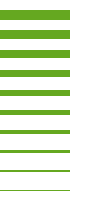https://doi.io-warnemuende.de/10.12754/msr-2019-0112
doi:10.12754/msr-2019-0112
© Author(s) 2019. This work is distributed
under

Dieses Werk ist lizenziert unter einer Creative Commons Namensnennung - Nicht kommerziell - Keine Bearbeitungen 4.0 International Lizenz.
Biological assessment of the Baltic Sea 2018
Abstract. Abstract Dating to 1979, the HELCOM time series on species composition, biomass and abundance of phyto- and zooplankton as well as macrozoobenthos from Kiel Bay to the Eastern Gotland Basin was continued in 2018. The phytoplankton spring bloom was well developed in the mid of March in the Belt Sea as a diatom bloom (Skeletonema marinoi, Thalassiosira spp.), but the importance of Mesodinium rubrum increased into eastern direction combined with a shift of the spring bloom peak to May. The bloom peak was primarily formed by Mesodinium rubrum in the Bornholm Basin, but by Peridiniella catenata in the Eastern Gotland Basin in the mid of May. A strong diatom (Dactyliosolen fragilissimus) bloom occurred in the Belt Sea and nitrogen-fixing cyanobacteria dominated in the Eastern Gotland Basin in July. The autumn bloom was composed of dinoflagellates (Ceratium spp.) and diatoms (Thalassiosira spp.) in Kiel Bay. Farther to the east, the relative importance of dinoflagellates decreased and that of diatoms (Cerataulina pelagica, Coscinodiscus granii) increased. The chlorophyll a concentrations were highest (16.2 mg m-3) during the spring in the southern part of the Eastern Gotland Basin. The seasonal pattern of vertical export of particulate organic matter in the Arkona Basin in 2018 showed a spring and a summer bloom, both dominated by diverse diatoms. A cyanobacteria bloom could not be identified in the settled material. Correspondingly, the δ15N signature indicates much lower nitrogen fixation rates than in the former years. The zooplankton was characterized by a general late seasonal development. The stock size increased in May in all areas. Rotifers and cladocera increased in abundance after some years of low density and dominated not only in the Arkona Basin, but also in the Bay of Mecklenburg. The spring and summer concentrations of the zooplankton remained low below the long-term average for the period 2000-2018, but showed a considerable increase by a factor of three from the historical minimum in 2016 . The species inventory shows a decline in the number of taxa which was related to a lower number of halophilic species, larvae of benthic species and gelatinous cnidarian species compared to preceding years. The 119 species found in the macrozoobenthos in 2018 mark a low diversity. The species number at the 8 monitoring stations ranged between 15 and 62. The oxygen supply in bottom waters was not always higher than 2 ml/l, but basically no oxygen depletion was observed with one exception. After a short recovery in 2017 we observed again a dramatically decrease (bisection) of diversity and abundance in the Fehmarnbelt area, probably because of low oxygen supply in July in this region. Depending on the region, the abundances ranged from 46 to 9.860 ind./m², and the biomass (ash free dry weight) from 0.4 g/m² to 47.5 g/m². Fifteen species of the German Red List (Categories 1, 2, 3 and G) were observed. Six non-indigenous species were recorded in the macrozoobenthos in 2018, which was a relatively low number. With Rangia cuneata a bivalve species originating from North America was found at the monitoring stations for the first time. Regarding the zooplankton, the copepod Acartia tonsa and the anthomedusae Lizzia blondina were regularly observed.
